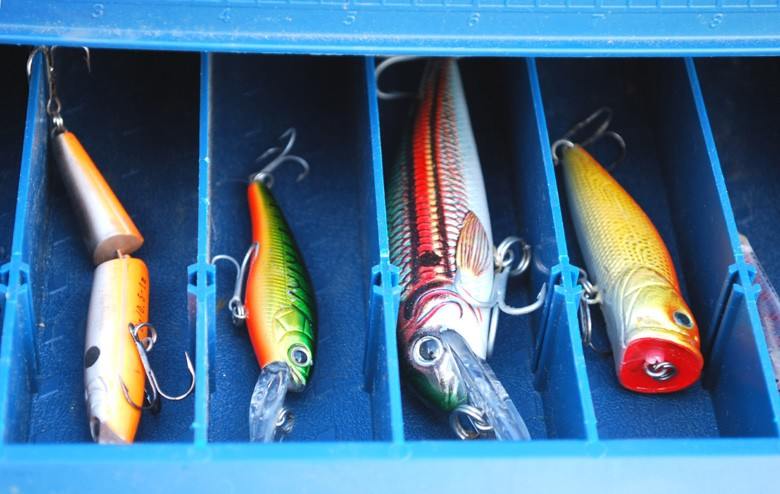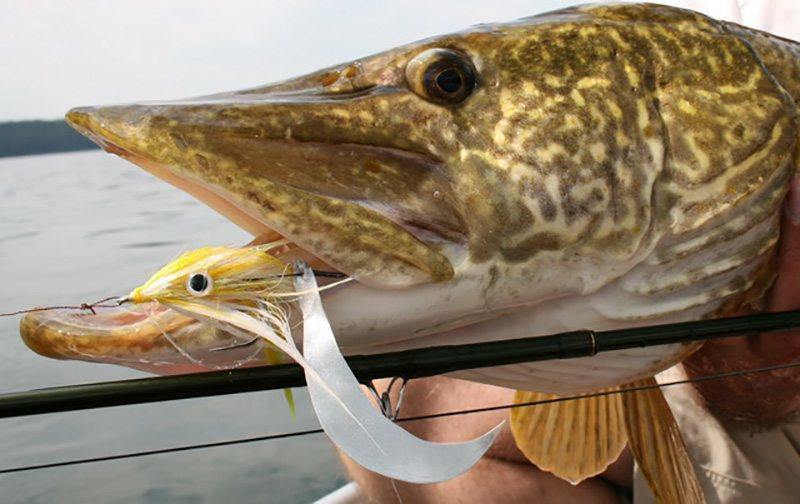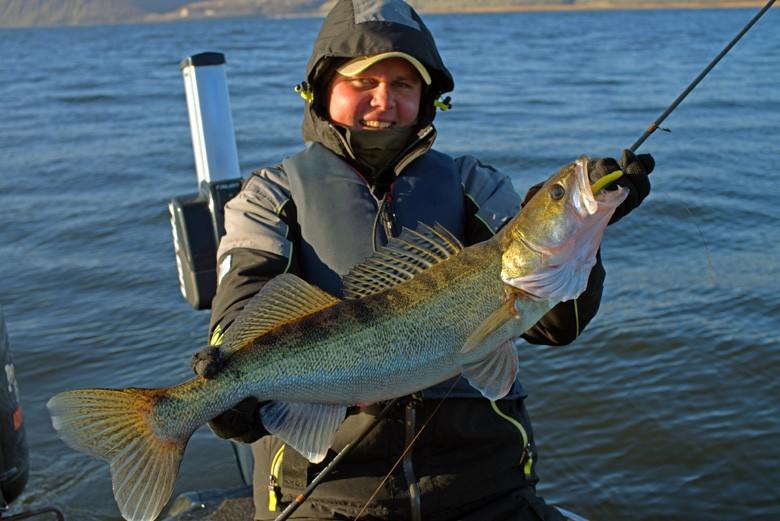I. Introduction
It’s the middle of summer and the water is about as warm as it’s going to get. In a lot of ways, it means that big bass are in deep water structures. If you’re fishing in a large reservoir we’re talking about large fishing, and if you’re fishing in natural lakes, we’re talking about deep weed lines and extended was shells.
If you have not used swimbaits for bass fishing, then now is the perfect time to get started. The fact is that swimbaits are now a more dominant method to catch numbers of pressured and big bass. What began as a huge bass craze out west, is now a permanent lure for catching bass.
More...
II. All about Swimbaits
Swimbaits can catch virtually any types of fish. Different swimbait brands have different designs and you can choose one to match the type of species you want to catch. They also vary in sizes to match fish of different sizes. So you can have a big catch or small catch depending on your preference.
1. Types of Swimbaits

The Sassy Shads of the past have been swapped by the jointed hollow and bodied swimbaits of today. There are hard swimbaits created from plastic, wood, and other composite items as well as soft plastic-molded swimbaits.
The soft plastic variety has several styles and sizes with different swimming tails to take into account. In general, the hard swimbaits are characterized as having divided bodies with no less than two segments along with joints in between, but we have witnessed as many as six segments on such swimbait.
They can be created with varying buoyancies and can also be either machined or hand crafted. Essentially, they’re cast great distances and gradually reeled back to your boat. Theses baits can have action provided to them and stopping and starting the retrieve.
Hard swimbaits are frequently used in the same areas where you might cast large topwater plugs, or covering large areas such as humps, flats and points where huge bass commonly roam.
The bigger variety makes huge splashes and that needs to be taken into consideration when targeting places where bass travel, so you do not spook the fish from the excellent looking spots with the cast itself.
Soft swimbaits also come in various sizes and can simply be bodies that need to be rigged on weighted jigheads, hooks, or fully rigged swimbaits with hooks and lead already rigged in the body. They’re intended to be cast and gradually reeled back to you too.
However, you can be a tad more lenient with the retrieves and let them sink a little more and worry of large treble hooks catching on cover such as the hard baits.
The majority of folks deem swimbaits to be options for clear water because they’re extremely visually oriented. Usually, they’re move subtly so the fish need to see them typically to stimulate a strike.
You can check out some of the best swimbaits here – The Best Swim Baits
Top 5 The Best Swim Baits
- Rose Kuli Multi Jointed Life-like Swimming as Life Fish Swimbait Hard Fishing Lure Bass Bait More Sizes and More Colors
- Supertrip 5/8-Ounce 5-Inch 8 Segment Swimbait Lures Crankbaits Baits Hard Bait Fishing Lures
- Swim Jigs with 3D Realistic Eyes Jig Head - High Quality Fishing Lures to Bait Bass
- Rapala X-Rap Jerkbait XR10 Fishing Lure
- Big Bite Baits Swimming Craw Lures-Pack of 6
2. Tails matter

Via: http://blog.fullingmill.co.uk/
Soft swimbaits will include a wedge or boot tail to get action and start a slow retrieve. The design of the wedge tail is a tad less active and includes a very, natural, delicate swimming motion, typically keeping the body linear on the retrieve while a boot tail drives more water displacement.
Flopping the bait’s tail backward and forward causes it to twist, which combines a roll and shimmy to the swimbait’s body. It isn’t to say that one is much better than the other, yet there could be cases where an action is favored by the fish than the other.
A large swimbait can be difficult to cast on bass fishing tackle. A few of the bigger eight and ten-inch swimbaits can weigh over two ounces. They need big, specifically-designed swimbait rods, frequently 8 feet in length which includes reels and heavy line with strong gears in them.
You need to lob the swimbait more than just cast it like you’d normally do to a lure. With the tinier swimbaits, seven-foot, medium-heavy power rods along with fifteen-pound fluorocarbon have turned out to be very popular alternatives.
Even a four or five-inch swimbait might look small compared to other bigger swimbaits, but they’re frequently much larger than bass fishing lures. Therefore, size is comparative and a five-inch or six-inch hollow belly swimbait typically gets a huge bite where a 10-inch worm or a jig failed to produce one.
3. Umbrella Rigs for Bass

Via: http://www.scout.com/
In 2009, when Andy Poss introduced his Alabama Rig, he released a wave of swimbait sales throughout the country. The tinier, castable umbrella rig allowed five swimbaits to be introduced to the bass on bass rods and reels, thus loads of new swimbaits were available consequently.
But basically, the umbrella rig has five baits on the harness that you can cast and retrieve. The rig stood out for a number of years on places such as the Tennessee River, but has started to decrease in popularity ever since the craze hit.
The umbrella rig needs heavy tackle, typically 65 to 80 pound braided line and a large reel for holding a lot of big line. Essentially you need to cast it as further as possible, allow it to sink to the preferred depth, and then gradually reel it back.
The strikes are vibrating and are simply part of the rig’s allure for most anglers.
4. When and Where

Swimbaits can be casted in clear to grimy-colored water. They do not perform best in muddy water. Also, they can be casted on the surface down to 50 feet effectively. A buoyant or unweighted swimbait can be fished just below the surface, where as a weighed one (lead weight) can be fished down to 30 feet. They are great in cold water and perform well in warm water and current just the same. There isn’t really a bad time to cast a swimbait. It can be an excellent way to target a big bite when it’s a requirement in tournament bass fishing. Folks like to throw them during windy days that have partly cloudy skies. Too bright or too dark days are not preferred.
The sink rate or lure weight are usually matched to the fishing conditions. Fishing right on the bottom on deep water requires a faster sink rate or a heavier lure. Fishing near cover or over vegetation entails a lighter weight or a slow sinker to fish the swimbait.
Check out this video to see an actual demo on how to use swimbait:
III. Conclusion
With good swimbaits, and knowing how to use them will allow you to fish bigger, smaller, deeper or shallower, faster or slower, radical results. First, you should choose swim bait capable of serving as lures in different depths and conditions.
In recent years, soft swimbaits have take center stage inside lure boxes, and for good reason. They simply catch fish in a big way at whatever levels. Swimbaits are truly versatile lures for luring fish. If it swims, chances are you can catch it with a swimbait – especially bass.
So if you haven’t tried using swimbaits yet, then I suggest you give it a shot and see how it can make your fishing activity more rewarding.
We hope you enjoyed this post. If you have questions and clarifications, don’t hesitate to address them in the comments.
Leave a Reply